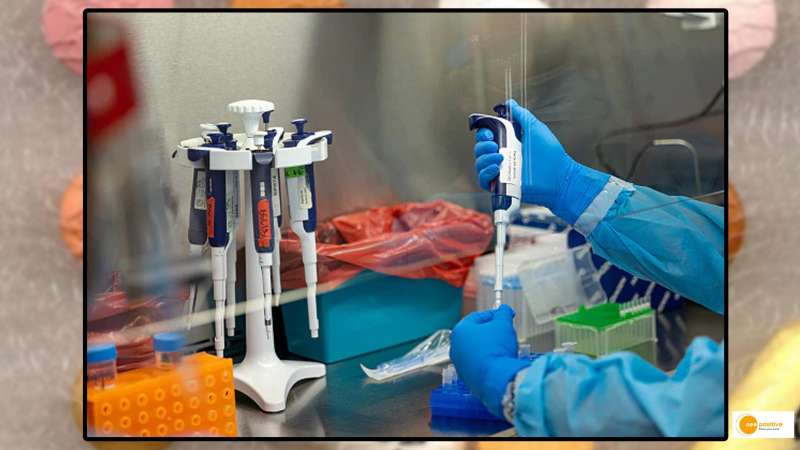

Researchers at the Indian Institute of Technology (IIT) Madras, Tel Aviv University, and Columbia University are investigating a rare genetic brain disease known as “GNB1 Encephalopathy” and attempting to develop an effective treatment.
GNB1 Encephalopathy is a type of brain disease or neurological disorder that affects individuals in the foetal stage, with less than 100 documented cases worldwide.
According to scientists, delayed physical and mental development, intellectual disabilities, and frequent epileptic seizures are among the early symptoms of the disease, and because genome sequencing is an expensive procedure, few parents opt for it early on.
This disease is caused by a single nucleotide mutation in the GNB1 gene, which produces one of the G-proteins, the “G?1 protein,” according to Haritha Reddy, a former PhD scholar at IIT Madras.
“Because the patient is a foetus, this mutation affects them.
Children with GNB1 mutations have delayed mental and physical development, epilepsy (abnormal brain activity), and movement issues.
Only a few hundred cases have been documented worldwide to date. However, the actual number of affected children is likely much higher because diagnosis is not widely available because it requires a complex and costly procedure “PTI spoke with Reddy from Israel, where she is conducting research.
“Every cell in the human body has a diverse set of signalling molecules and pathways that allow it to communicate with other cells as well as with itself. Cells’ primary signalling mechanism is ‘G-Protein Coupled Receptor’ (GPCR) signalling “She continued.
A GPCR is a receptor that receives a signal (for example, a hormone, light, or neurotransmitter) from the outside of the cell and transmits it to the inside.
“GPCR is found in the cell membrane and is linked to a G-protein (???) from within the cell. G-proteins are the molecules immediately downstream that relay the signal received by the GPCR. These G-proteins are found in all cells, and any malfunction will result in disease “She elaborated.
Mutations in the GNB1 gene cause the neurological disorder (GNB1 Encephalopathy), which is characterised by general developmental delay, epileptiform activity in the electroencephalogram (EEG), seizures of various types, muscle hypotonia or hypertonia, and other variable symptoms.
According to Amal Kanti Bera, Professor, Department of Biotechnology, IIT Madras, because GNB1 encephalopathy is a rare and little-known disease, there hasn’t been much research on it.
“We don’t understand the disease’s mechanisms. We have no idea how to treat this disease. As a result, research into GNB1 encephalopathy is critical. We’ve got a long way to go. It is not easy to create a drug that can effectively treat this disease “He told PTI that.
“We are currently working on preclinical animal models of this disease.
According to Nathan Dascal, Professor at Tel Aviv University, because the developmental issues begin during the foetal stage, gene therapy is the most likely option for mitigating the effects of the mutation. However, the development of this complex procedure will take many years and a significant financial investment.
“On the other hand, epilepsy can be treated with specific drugs that improve the patient’s quality of life. Specific targets must be identified in order to treat epilepsy. The majority of epilepsies are caused by altered ion channel function. Ion channels are proteins that help neurons and heart cells communicate electrically.
“It is also possible that a combination of already available drugs will aid in the development of a tailored treatment regimen for the rare disease. As with Covid, no new drugs were discovered, but existing drugs were incorporated into the treatment protocol “said.
The research was funded by an Indo-Israel Binational grant from the Israel Science Foundation (ISF) and the University Grants Commission of India (UGC).
Professor Dascal stated that whole genome sequencing, or the elucidation of the baby’s complete genetic analysis, can be very helpful in the early diagnosis of the disease.
“We discovered that the function of a potassium channel known as the G-protein gated Inwardly Rectifying K+ (GIRK) channel (found in the brain, heart, and endocrine glands) is significantly affected. Then we used specific drugs to correct the channel activity.
“As I80T mutation is the most prevalent variant in GNB1 encephalopathy patients, we are currently focusing prioritizing on this mutation alone. We have mouse models with the mutations I80T, K78R, and D76G. We created induced pluripotent stem cells (iPSCs) from the patient’s I80T fibroblasts.
“We will differentiate patient-derived iPSCs into neurons. “Our findings pave the way for further research in animal models or patient-derived neurons in order to develop concrete therapeutic approaches,” he said.


